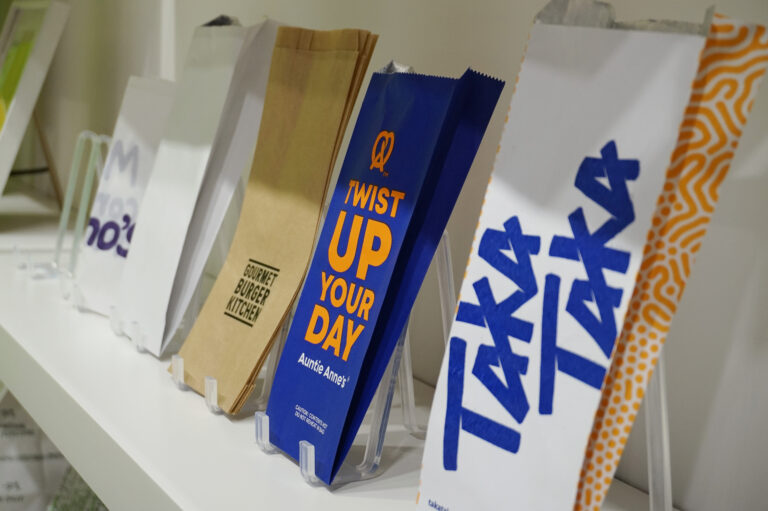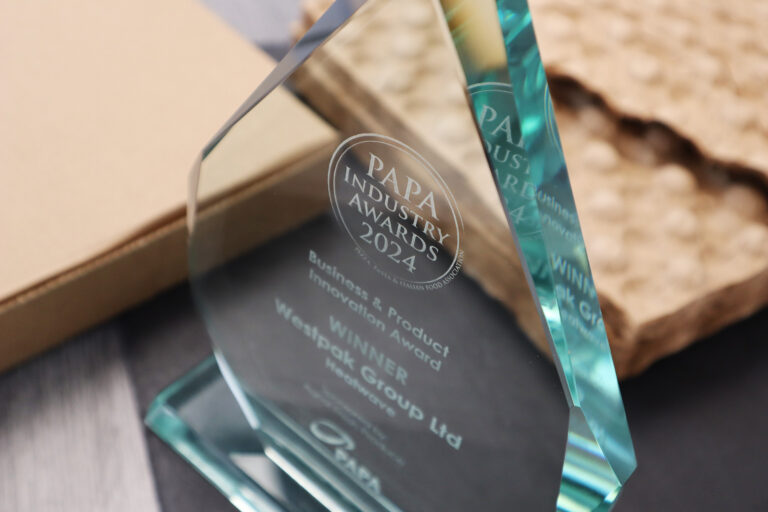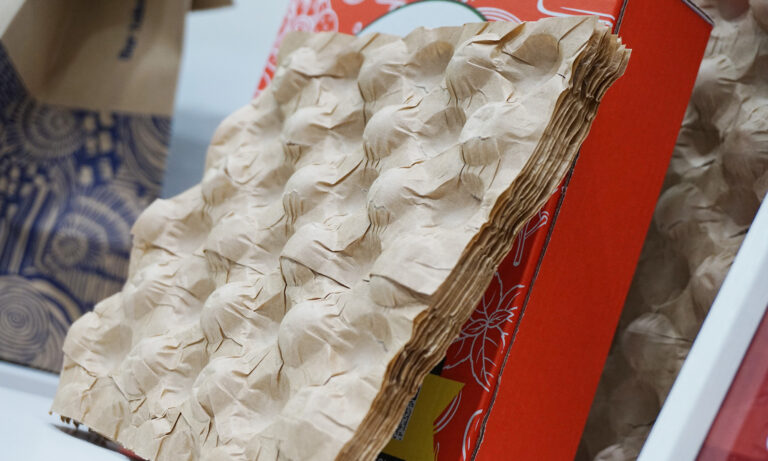It’s no secret that the packaging industry as a whole has endured significant issues in the global supply chain for a sustained period. Getting to the bottom of these challenges isn’t a simple task. Many contributing factors are deeply intertwined with each other, affecting logistics on a global scale. In addition, while many of these challenges have either been caused by, or exacerbated by the coronavirus pandemic, a number of non-Covid related factors have also further amplified issues. We’ve highlighted some of the most significant causes below as well our top tips for how to best work within the challenges the industry faces.
SPIKES IN ONLINE SHOPPING
The broad consumer trend of moving to online shopping was only amplified by the pandemic. This in turn placed a significant strain on cardboard and packing resources. As the BBC commented, “The boom in online ordering during the pandemic has also meant rocketing demand for cardboard, as consumers have started taking delivery of everything from bicycles to houseplants”(1). The guardian also highlighted a related issue, “The nation’s online shopping habit is causing a cardboard shortage as empty delivery boxes are hoarded in homes or stuck in council recycling bins”(2). This has also had a detrimental effect on the rate of cardboard recycling, limiting the rate of materials being fed back into the manufacturing loop.
OVERWHELMING DEMAND FOR SUSTAINABILITY
The strong consumer demand for sustainability has been one of the core strengths for the packaging industry over recent years. However, this surge in demand for materials such as cardboard and Kraft has created a level of demand that manufacturers have struggled to keep pace with. ‘Market Watch’ comments, “The growing demand for kraft paper packaging solutions among various end-user industries such as food & beverages, pharmaceuticals, grocery bags, and consumer durables, and the increasing urban population across regions are factors that are driving the growth of the kraft paper market”(3). Additional sources have also stated, “Due to environmentally-friendly policies around the globe, many brands – especially in eCommerce – now use paper packaging …Over time, paper mills’ demand for raw paper materials has reached the point where demand begins to exceed supply”(4). This imbalance between supply and demand has not been helped by the pandemic. As the world returned to more regular businesses activity following lockdown restrictions, suppliers were faced with a global surge in demand for cardboard, Kraft and other paper-based packaging further straining their manufacturing capabilities.
RAW MATERIAL PRODUCTION ISSUES
A number of key raw materials have been in increasingly limited supply. While lockdown measures are partially accountable for this trend, there are also a number of other contributing factors. For example, there has been widespread reporting on the prevalence of ‘force majeure’ events affecting supply. As one article highlights, “In March 2021, IVK Europe reported on the wave of force majeure statements from European raw material suppliers and its consequences for manufacturers of products made of plastics. The organisation, which represents plastic sheet producers, has now issued an update, saying that there is no improvement of this situation in sight”(5). Such events have been attributed to a range of factors including extreme weather and storms in the United States and the much publicised Suez Canal ship blockage. Increased demand from larger countries has also been linked to the material shortages faced elsewhere, “The large number of financially strong overseas buyers is now contributing to fewer raw materials being available for European countries”(6). These shortages have, in turn, led to a sharp increase in prices which is further affecting the industry. More recently still, we have also seen the affects of increases in energy costs on production facilities. Paper mills, for example, are known for the energy costs comprising a significant proportion of their overall operating costs.
SPIRALLING SHIPPING COSTS
The Coronavirus pandemic has had a profound effect on the global shipping industry with a situation that has become defined by rocketing shipping costs and widespread container shortages. The urgent delivery of PPE equipment required during the early stages of the pandemic has had a long-term affect. As Forbes highlights, “Many containers that carried millions of masks to countries in Africa and South America early in the pandemic remain empty and uncollected because shipping carriers have concentrated their vessels on their most profitable Asia-North America/Europe routes. In other words, there are fewer containers in circulation, creating an imbalance in usable supply and demand”(7). The effects that these issues can have on shipping prices for certain routes can be stark. As a point of reference, the same source states “The price to ship a container from China to the U.S. West Coast has gone up 13-fold from pre-COVID levels”.
HGV DRIVER SHORTAGES
Once shipping containers do find themselves in port, we have also felt the affects of the shortages of HGV drivers. Due largely to the petrol crisis, the driver shortage has been widely publicised. It’s an issue that pre-dates the pandemic but has certainly been worsened by Coronavirus and, arguably, also by Brexit. A BBC article highlights the findings of an Office for National Statistics (ONS) study, “The Annual Population Survey produced by the Office for National Statistics (ONS) estimates that there were 16,000 fewer EU nationals working as HGV drivers in the year ending March 2021, than in the previous year. Even before Covid, the overall estimated shortage was about 60,000 drivers.” There has also been comment on the role Coronavirus has played in the driver shortage, “As travel became increasingly restricted last year, and large parts of the economy shut down, many European drivers went home. And haulage companies say very few have returned”(8)
"What do you believe to be the reasons behind the driver shortage?"
Study by Road Haulage Association (RHA) - number of responses shown.
THE INDUSTRY’S BIGGEST PLAYERS
Another major factor to consider is the shape and structure of the packaging industry. A number of major global brands being able to continue their packaging supply will inevitably cause shortages elsewhere when supply becomes limited overall. For example, McDonald’s is know to have “more than 39,000 restaurants” internationally(9). The scale of packaging such an operation requires will eclipse the needs of smaller brands. Similarly, brands such as Amazon are known for the vast quantities of packaging materials used. As one article states, “It’s been widely reported that Amazon and other big retailers have snapped up most of the world’s cardboard supply to fulfil online orders, leaving smaller businesses unable to get their hands on boxes of their own …While data is hard to come by, analysts estimate that Amazon shipped 415 million packages in July 2020 alone”(10).TOP TIPS
While there is no single course of action that can eradicate the supply challenges businesses are currently facing, there are still best practices to minimise the effects of these issues. Firstly, and perhaps most importantly, we would urge all our clients to plan and order as far in-advance as possible for their packaging supplies. But giving yourself as much time as possible, you are minimising the damage of any potential delayed lead-times from across the industry. Secondly, it’s important to be open to identifying a secondary, alternative range of packaging materials and carefully consider all relevant sustainability implications. For example, while a material such as Kraft might be able to offer a great range of sustainability benefits, other materials, which offer other sustainability credentials may be more readily available. We would also encourage businesses to simplify the process as much as possible and think about avoiding processes that could further lengthen packaging lead-times. This could including avoiding implementing new corporate branding and revised graphics.(1) www.bbc.co.uk/news/business-55878062
(2) www.theguardian.com/business/2021/jun/22/uk-online-shopping-boom-fuels-cardboard-shortage-as-households-hoard-boxes
(3) www.marketwatch.com/press-release/kraft-paper-market-insights-report-future-growth-revenue-analysis-and-forecast-till-2025-2021-09-23
(4) hawkemedia.com/insights/paper-and-packaging-pricing-in-2021/
(5) packagingeurope.com/no-end-in-sight-to-ongoing-shortage-of-raw-materials/
(6) packwise.de/the-shortage-of-raw-materials-in-the-packaging-industry-why-a-digitalized-supply-chain-is-worth-its-weight-in-gold/
(7) www.forbes.com/sites/garthfriesen/2021/09/03/no-end-in-sight-for-the-covid-led-global-supply-chain-disruption
(8) www.bbc.co.uk/news/57810729
(9) www.reuters.com/business/retail-consumer/mcdonalds-says-nearly-all-its-paper-packaging-sustainable-fiber-2021-08-19/
(10) www.wired.co.uk/article/amazon-cardboard-boxes-recycling


